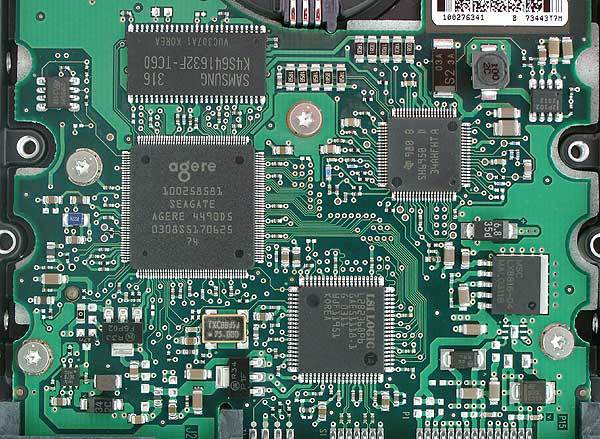No products

Printed Circuit Board Damage
A printed circuit board (PCB) mechanically supports and electrically connects electronic components or electrical components using conductive tracks, pads and other features etched from one or more sheet layers of copper laminated onto and/or between sheet layers of a non-conductive substrate. Components are generally soldered onto the PCB to both electrically connect and mechanically fasten them to it.
Advice: Replacement of PCB (Printed Circuit Board) is for data recovery reason, do not use for data storage.



Firmware Corruption
Firmware is defined as a computer program that is hard-coded into the hard driveand contains its basic operational storage programming. Another way to think of it is that firmware is a software middleman that allows your hardware to talk to software
Bad Sectors
A bad sector on a hard drive is simply a tiny cluster of storage space — a sector — of the hard drive that appears to be defective. The sector won’t respond to read or write requests.
Bad sectors can occur on both traditional magnetic hard drives and modern solid-state drives. There are two types of bad sectors — one resulting from physical damage that can’t be repaired, and one resulting from software errors that can be fixed.
Types of Bad Sectors
There are two types of bad sectors — often divided into “physical” and “logical” bad sectors or “hard” and “soft” bad sectors.
A physical — or hard — bad sector is a cluster of storage on the hard drive that’s physically damaged. The hard drive’s head may have touched that part of the hard drive and damaged it, some dust may have settled on that sector and ruined it, a solid-state drive’s flash memory cell may have worn out, or the hard drive may have had other defects or wear issues that caused the sector to become physically damaged. This type of sector cannot be repaired.
A logical — or soft — bad sector is a cluster of storage on the hard drive that appears to not be working properly. The operating system may have tried to read data on the hard drive from this sector and found that the error-correcting code (ECC) didn’t match the contents of the sector, which suggests that something is wrong. These may be marked as bad sectors, but can be repaired by overwriting the drive with zeros — or, in the old days, performing a low-level format. Windows’ Disk Check tool can also repair such bad sectors.
Causes of Hard Bad Sectors
Your hard drive may have shipped from the factory with bad sectors. Modern manufacturing techniques aren’t perfect, and there’s a margin or error in everything. That’s why solid-state drives often ship with some defective blocks. These are marked as defective and are remapped to some of the solid-state drive’s extra memory cells.
On a solid-state drive, natural wear will eventually result in sectors becoming bad as they’re written to many times, and they’ll be remapped to the solid-state drive’s extra — or “overprovisioned” — memory. When the solid-state drive’s extra memory runs out, the drive’s capacity will start to drop as sectors become unreadable.
On a traditional magnetic hard drive, bad sectors can be caused by physical damage. The hard drive may have had a manufacturing error, natural wear may have worn part of the hard drive down, the drive may have been dropped, causing the hard drive’s head to touch the platter and damage some of the sectors, some air may have entered the sealed area of the hard drive and the dust may have damaged the drive — there are many possible causes.

Causes of Soft Bad Sectors
Soft bad sectors are caused by software issues. For example, if your computer suddenly shuts off due to a power outage or a pulled power cable, it’s possible that the hard drive may have shut off in the middle of writing to a sector. In some cases, it’s possible for sectors on the hard drive to contain data that doesn’t match their error-correction code — this would be marked as a bad sector. Viruses and other malware that messes with your computer could also cause such system issues and cause soft bad sectors to develop.
Data Loss and Hard Drive Failure
The reality of bad sectors brings home a chilling fact — even if your hard drive is otherwise working properly, it’s possible for a bad sector to develop and corrupt some of your data. This is another reason why you should always back up your data — multiple copies are the only thing that will prevent bad sectors and other issues from ruining your hard drive’s data.
A few bad sectors don’t indicate that a hard drive is about to fail — they can just happen. However, if your hard drive is rapidly developing bad sectors, it may be a sign that your hard drive is failing.

